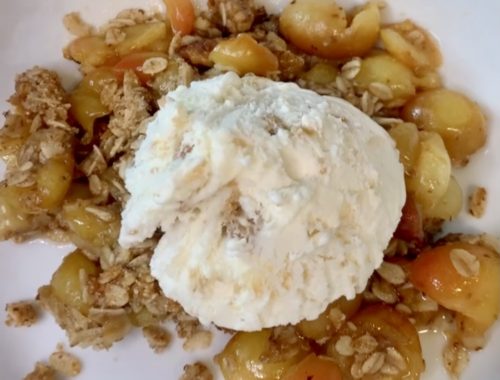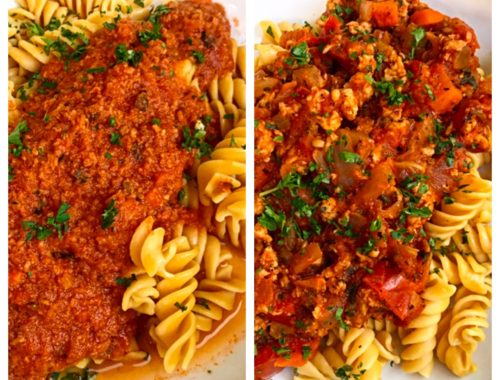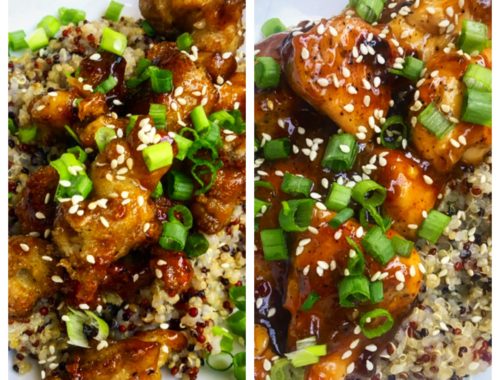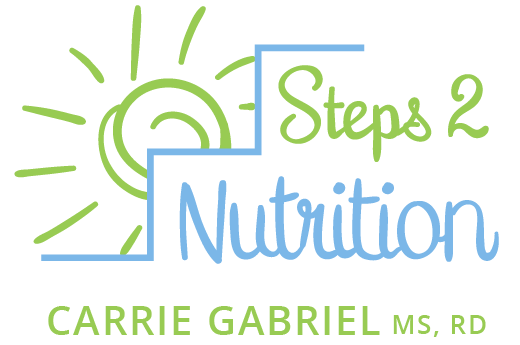How Do You Cook Your Vegetables?
As a dietitian, there is one thing you will never be able to argue with me about, and that is EATING YOUR VEGETABLES. We may be able to argue about how many carbohydrates you need a day, or whether or not a gluten-free diet is for you, but vegetables are where I draw the line.
Vegetables are among the healthiest foods out there. They are loaded with vitamins and minerals our bodies need for optimal performance and daily functioning. The more vegetables we eat on a daily basis, the more research shows we are lowering our risks for chronic diseases and cancers.
So why aren’t more people eating their vegetables? Based on working with various clients and hearing numerous complaints on this matter, I can safely say one major reason is that people are unsure of how to cook/prepare vegetables properly.
For some, eating vegetables is a chore and the taste or texture is unappetizing…so they skip them. I am here to let you know, cooking vegetables does not have to be difficult and there are many simple ways to prepare delicious vegetable dishes you can consume daily at home!
Obviously one way to eat certain vegetables is raw. Carrots, celery, radishes, bell peppers and broccoli can all be tasty without cooking. Raw vegetables can be delicious with a little hummus, guacamole or greek yogurt for dipping. For some people who are not used to consuming that much fiber, eating a lot of raw vegetables can cause some intestinal discomfort. Unlike cooked vegetables, raw vegetables contain a specific type of fiber called cellulose. However, the body is not always capable of producing the enzyme needed to break down cellulose. As a result, the gastrointestinal system goes into overdrive to digest the vegetable, which can cause stomach pain and bloating for some people.
Steaming vegetables is one of the healthiest ways to cook them. Steamed vegetables are synonymous with healthy eating for good reason. Steaming cooks vegetables without submerging them in water, so they are more likely to retain vitamins and minerals. Unlike sautéing, steaming doesn’t require oil, so it’s a great way to prepare vegetables if you’re watching calories. The best vegetables for steaming include broccoli, carrots, cauliflower, green beans, zucchini, and other relatively tender vegetables. Once your vegetables are steamed, you can add spices to them, like ginger, lemon pepper or even a little sea salt. I like to add a few tablespoons of salsa to mine or a low sodium soy sauce like Bragg’s Liquid Amino Acids.
Sautéing appears to be one of the more popular ways to cook vegetables, at least, amongst my clients. Sautéed vegetables retain their vitamins and minerals, as well as taste and color. This method is best suited for tender vegetables, such as asparagus, baby artichokes, snow peas, sweet peppers, onions, and mushrooms. I see most people running to the olive oil when it comes to sauteing. Olive oil does have a low smoke point, meaning it will burn at a lower temperature than most other oils. YOU CAN saute with olive oil, but keep the temperature low and don’t saute for more than a few minutes. However, be open to other oils that might be better for sauteing, like grapeseed or coconut oil, two of my favorites. Grapeseed oil is very light with minimal flavor, which works well if you end up wanting to add sauces or more poignant spices to your dishes and don’t want too many flavors competing with eachother.
Stir-frying is very similar to sautéing, with two important differences. Stir-frying is done over very high heat, and the food is constantly stirred to prevent it from burning on the hot pan. Stir-frying is often done in a wok, the classic utensil of Chinese cooking. But you can also stir in a sauté pan, as long as the bottom is thick enough to distribute the high heat evenly.
While the definition of saute or fry lends itself to cooking with oil, I have clients question me, pointing out they are ” adding olive oil here, avocado here and sliced almonds here…maybe oil in my vegetables is too much?” I understand their concerns and I want to point out, along with steaming as being a non-oil cooking option, vegetables can be sauteed or stir fried in low sodium chicken or vegetable broths. I have read articles about the broth drying out before the vegetables cook, but just last night I cooked swiss chard in a saute pan with only low sodium chicken broth (see below) and a touch of Bragg’s Liquid Amino Acids and it turned out delicious. Make sure you keep your eye on what you are cooking and if it appears to be drying out, add more broth!
One other method I almost forgot to mention and is one of my favorites for clients who are trying to stop eating a lot of fried foods, crispy fried food mouth feel, is baking or broiling vegetables. I love nothing more than to cut up a bunch of Brussels sprouts and/or cauliflower, dip each piece is a little olive or coconut oil and sprinkle sea salt and pepper on them, put them on a tray in the oven (20 minutes for Brussels sprouts, 30 for cauliflower) and enjoy. That intense cooking tends to “fry” the vegetable and give that savory fried food mouth feel that many people crave. Here is an awesome recipe along those lines for you all to try.
Baked Curried Cauliflower
2 tablespoons of extra virgin olive oil
1 lemon, juice squeezed
1 tablespoon curry powder
1/2 teaspoon sea salt
1/4 teaspoon cayenne (optional)
1 head cauliflower, leaves and core removed, florets cut into 1/4-in.-thick slices
Preheat oven to 450F.
In a large bowl, whisk together oil, lemon juice, curry powder, salt, and cayenne if you like.
Add cauliflower slices and toss to coat. Spread cauliflower in a single layer in a large baking pan.
Bake until cauliflower is tender, chewy, and brown, 25 to 30 minutes.
ENJOY!
Kiwi Kale Banana Juice
You May Also Like

Rainier Cherry Walnut Crisp
July 8, 2021
Turkey Bolognese…The Frozen Trader Joe’s Version vs. The Homemade Version
October 30, 2018


